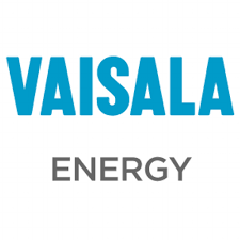Robust remote sensing system achieves milestone across 3700+ deployments in 45 countries around the globe
Vaisala, a global leader in environmental and industrial measurement, has announced that its Triton Wind Profiler, a leading remote sensing system, will soon hit a major milestone, reaching 20 million hours of collected wind data since market introduction in 2008. The data have been gathered over 3700 deployments, spanning 45 countries and six continents, where Triton has been used to provide accurate wind measurements at sites both under development and in operations. In addition, Triton units have achieved a fleet-wide median up-time of 99.93% – a testament to the robust nature of the device.
Commenting on this milestone, Pascal Storck, Head of Renewable Energy at Vaisala, said: “The Triton is a real workhorse when it comes to all aspects of wind measurement worldwide and reaching 20 million hours shows the system’s leading position in the market. That’s just shy of 2,300 years of collected wind data, and that number not only demonstrates Triton’s consistency and reliability, but also reflects a growing appreciation among developers and operators for the system’s versatility compared to traditional met masts and other available measurement options.”
Vaisala’s Triton global deployment statistics serve to illustrate the evolving applications of remote sensing technology by wind energy developers and operators in both established and emerging markets. Analysis of market-specific usage patterns over the past nine years reveals trends that correspond closely to the progress and overall maturity of those markets.
Rising deployments at operational wind farms in established markets
In the more established European and U.S. wind markets, there have been close to 2,600 deployments of the Triton, facilitating a range of uses in both site planning and operations. On the planning side, as the height and capacity of modern turbines has increased, the Triton has been widely used as an easier and more cost-effective alternative to static met towers throughout the early phases of development, from site assessment to turbine siting.
Simultaneously, as these markets and their wind projects mature, Triton is increasingly being deployed to help optimize wind assets. Today the system is commonly used at operational wind parks to provide permanent met reference information, model wake effects, conduct power performance testing and validate anemometry equipment. The recent introduction of the International Electrotechnical Commission (IEC) standard for the use of remote sensors in power performance testing is expected to drive a further increase in deployments at operational projects and will be the topic of an upcoming webinar hosted by Vaisala.
Facilitating global wind prospecting
Since 2008, the remote territories and emerging wind markets of Australia, Asia, Africa and Latin America have seen well over 900 Triton deployments. As these nascent markets continue to develop, there is often a greater emphasis on identifying suitable sites for development, across terrain that is frequently complex.
Key emerging markets in which the Triton has seen significant numbers of deployments include Brazil, China and South Africa. Here, its reliability and ease of transportation has seen the remote sensing system play an important role in prospecting, helping developers and independent engineers to quickly identify the most promising sites for wind farm development – and, in the process, drive regional growth.
Remote monitoring, remote support
The robust nature of the Triton – which has conducted successful measurement campaigns while enduring temperatures of -40 degrees Celsius north of the Arctic Circle and hurricane-force winds on the U.S. East Coast – is backed up by an equally robust support network. Vaisala’s SkyServe online platform enables users to monitor data gathered by the Triton, but also allows Vaisala’s own team of technicians to assess the performance of the global fleet and ensure as little downtime as possible.
“It’s gratifying to see the range of markets in which Triton continues to be successfully deployed,” added Storck. “As the data bears out, the Triton is built to last, robust enough to perform in a variety of harsh environments the world over, and versatile in contributing to the many stages of a wind farm’s lifetime, spanning both development and operations phases.”
Click here to learn more about the use of Vaisala’s Triton Wind Profiler around the world or meet with the team at AWEA Windpower, May 22-25, in Anaheim, CA at Booth 3736.
In addition, registration is now open for Vaisala’s upcoming webinar, “New IEC Standard: What You Need To Know About Remote Sensing.”
Vaisala Energy
Weather provides the fuel for renewable energy projects and is one of the largest variables impacting production. Vaisala uses more than 80 years of weather expertise to help the global renewable energy industry develop and operate wind and solar projects better, faster and more efficiently. Our measurement, assessment, forecasting and asset management products and services leverage proven science and advanced technology to mitigate the impact of weather risks on energy generation and support profitable decision-making across the entire project lifecyle, from greenfield prospecting and due diligence through operational forecasting and plant optimization. www.vaisala.com/energy twitter.com/VaisalaEnergylinkedin.com/company/vaisala-energy
About Vaisala
Vaisala is a global leader in environmental and industrial measurement. Building on 80 years of experience, Vaisala contributes to a better quality of life by providing a comprehensive range of innovative observation and measurement products and services for chosen weather-related and industrial markets. Headquartered in Finland, Vaisala employs approximately 1600 professionals worldwide and is listed on the NASDAQ OMX Helsinki stock exchange. www.vaisala.com www.twitter.com/VaisalaGroup


























